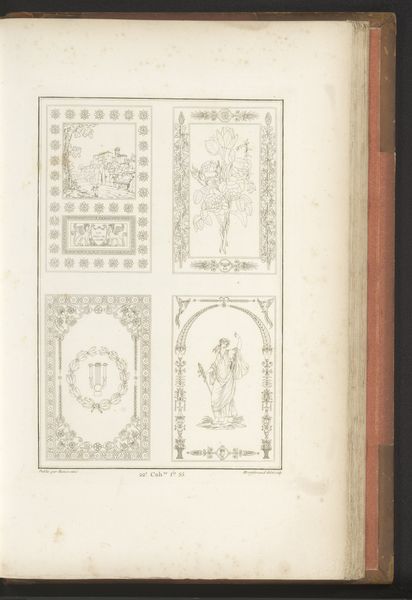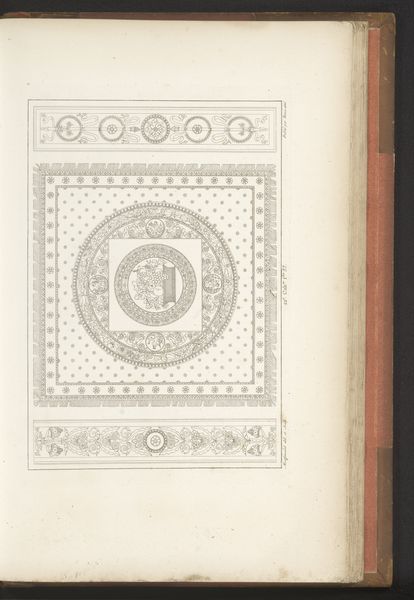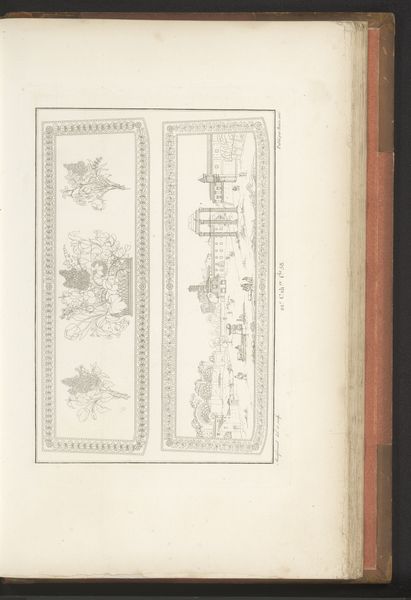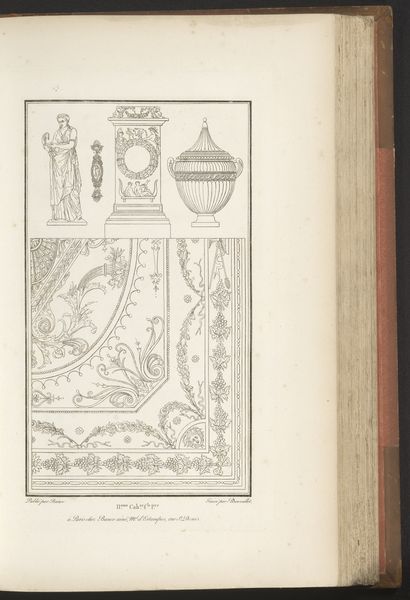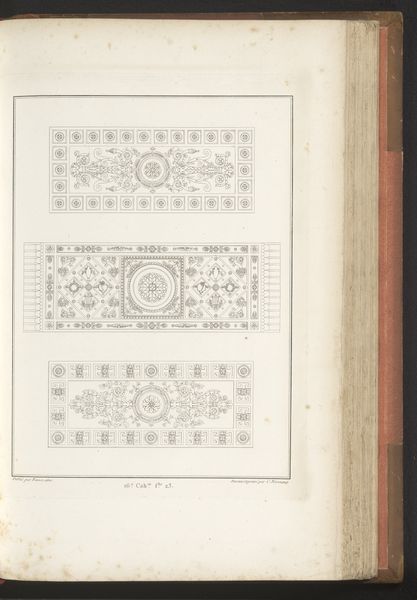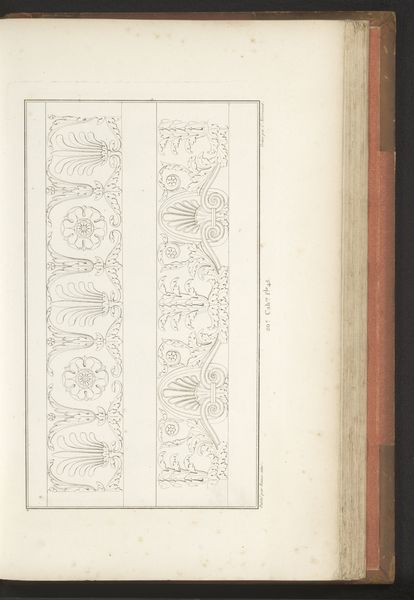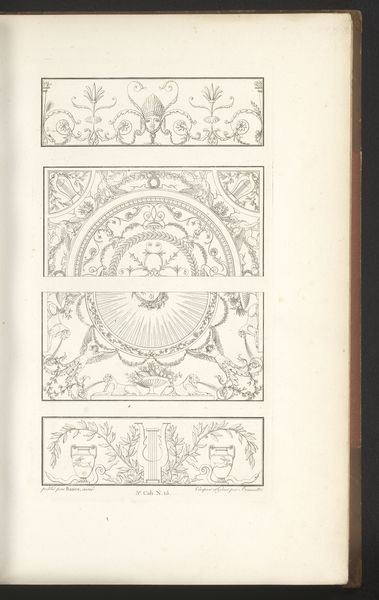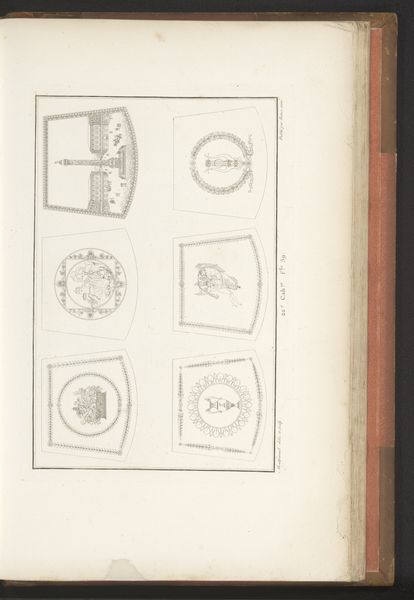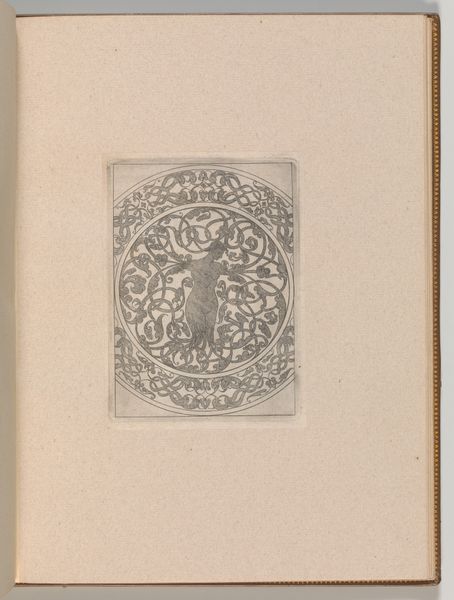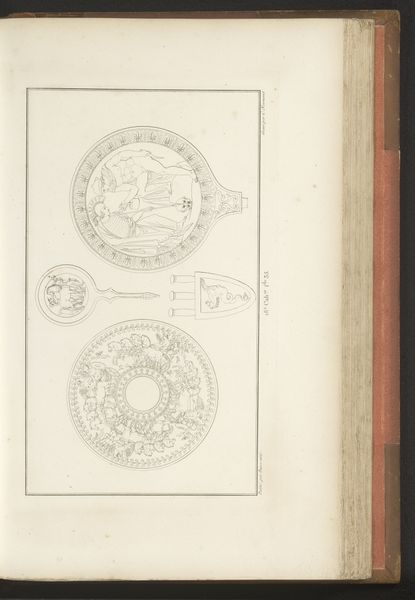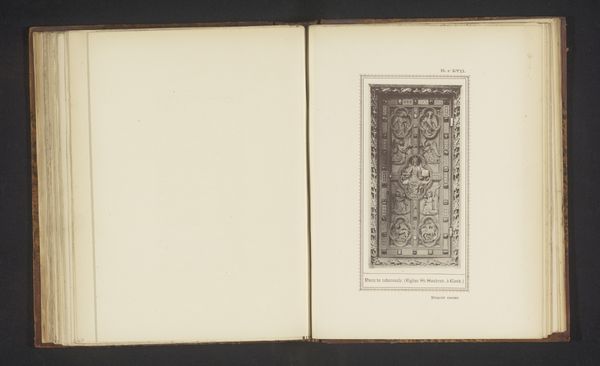
drawing, graphic-art, print, paper, ink
#
drawing
#
graphic-art
#
neoclacissism
# print
#
paper
#
ink
#
geometric
Dimensions: height mm, width mm
Copyright: Rijks Museum: Open Domain
These tapestry designs by August Ricard de Montferrand are striking for their clear, symbolic language. Within circular medallions, scenes unfold, framed by ornate borders—a common motif found in both classical friezes and Renaissance tapestries. Observe the laurel wreaths, symbols of victory and honor, which date back to ancient Greece and Rome. These aren’t merely decorative; they carry centuries of accumulated meaning, evoking power and prestige. Think of emperors crowned with laurel, or triumphant athletes celebrated in similar fashion. Consider how these symbols have persisted through time, shifting in nuance but retaining their core impact. In a psychoanalytic sense, such recurring motifs tap into a collective memory, engaging our subconscious with deeply ingrained cultural associations. The emotional resonance of these symbols is a powerful force, connecting us to historical narratives and archetypal ideas. These wreaths re-emerge, transformed yet familiar, in Neoclassical art, political emblems, and even contemporary logos. This tapestry design shows the non-linear progression of symbols that resurface, evolve, and gain new relevance.
Comments
No comments
Be the first to comment and join the conversation on the ultimate creative platform.
